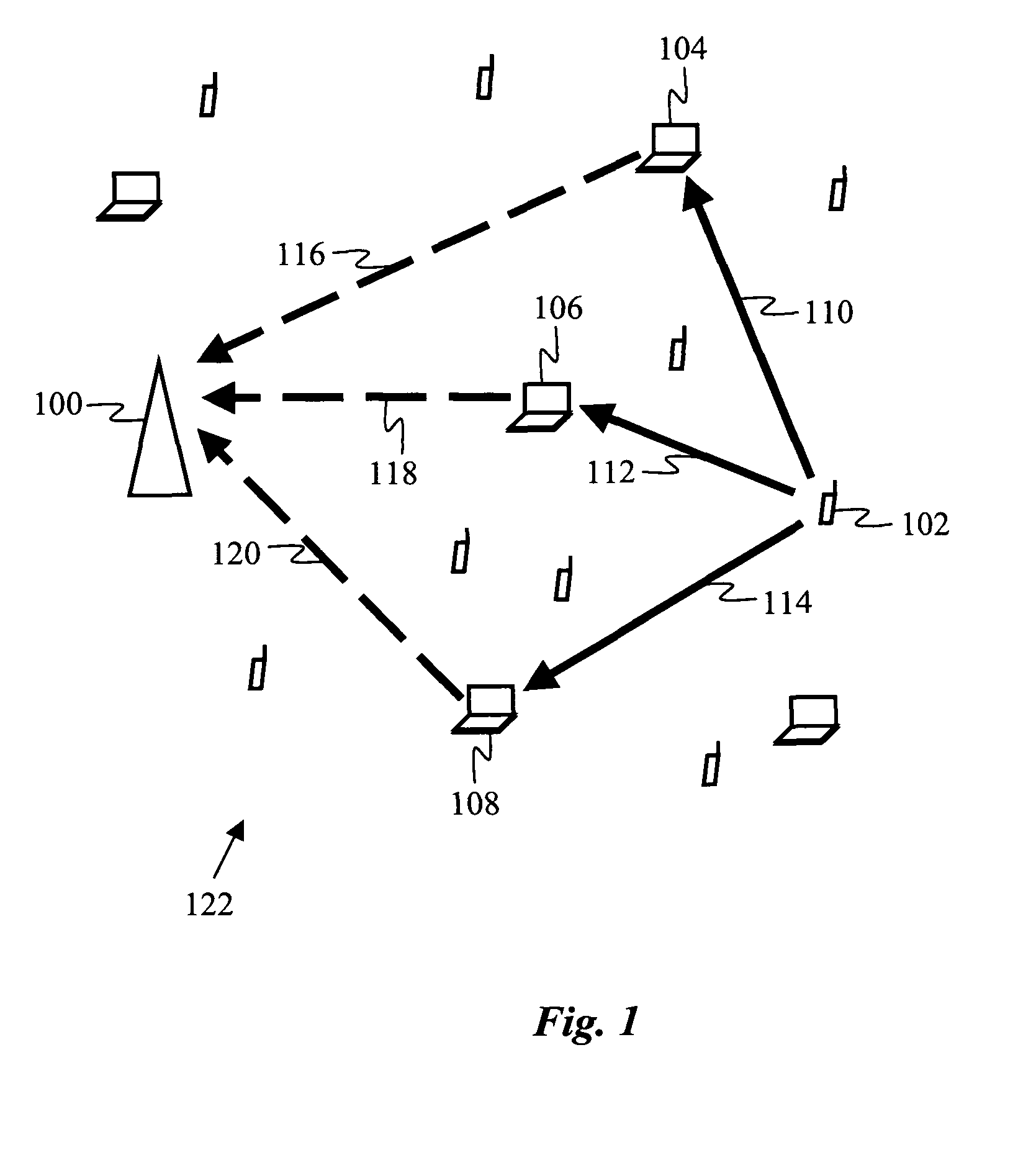Cooperative OFDMA and distributed MIMO relaying over dense wireless networks
a wireless network and wireless network technology, applied in the field of wireless data networks, can solve the problems of increasing hardware complexity and cost, imagining mobile client cooperative relaying or resource allocation techniques to conserve mobile device energy, and unable to fully develop and realize optimal system specific techniques, etc., to achieve the effect of increasing the energy efficiency of mobile devices in the network and saving power
- Summary
- Abstract
- Description
- Claims
- Application Information
AI Technical Summary
Benefits of technology
Problems solved by technology
Method used
Image
Examples
Embodiment Construction
[0020]According to one embodiment of the invention, a method for wireless communication is provided for a dense wireless network, i.e., a network in which a majority of pairs of devices in the network have other devices positioned in the space between them, and in which the nearest neighbor separation between devices in the network is less than 50 meters. An example of such a dense network is a local area network or personal area network containing ten or more devices, such as the network 122 shown in FIG. 1. The network 122 contains various mobile wireless devices, such as devices 102, 104, 106, 108, as well as one or more stationary wireless devices, such as device 100. The mobile devices are typically power-limited, e.g., battery-powered devices such as laptops, PDAs, cell phones, or other hand-held devices, while the stationary devices are typically devices with superior power supplies, e.g., wireless LAN access points or desktop computers with wired infrastructure power. The po...
PUM
 Login to View More
Login to View More Abstract
Description
Claims
Application Information
 Login to View More
Login to View More - R&D
- Intellectual Property
- Life Sciences
- Materials
- Tech Scout
- Unparalleled Data Quality
- Higher Quality Content
- 60% Fewer Hallucinations
Browse by: Latest US Patents, China's latest patents, Technical Efficacy Thesaurus, Application Domain, Technology Topic, Popular Technical Reports.
© 2025 PatSnap. All rights reserved.Legal|Privacy policy|Modern Slavery Act Transparency Statement|Sitemap|About US| Contact US: help@patsnap.com



